Rwenzori Mountain Climbing: Margherita Peak

A touch, challenging climb to the Ice-capped Peak of Rwenzori mountains
Itinerary
Day 1: Steady walk with a steep climb for the last kilometer.
Start at 1,450 meters and sleep at Sine Hut at 2,596 meters being a height gain of 1,146 meters
Guides generally brief clients at the start of the trek or the night before.
It is best to start the trek by 9 am but can leave as late as 11am. You walk 2.2km to the UWA rangers post at 1,727 meters, which takes about one hour. Here you pay the gate entrance fee and the rangers brief you on the rules of the National Park.
Afro Montane Forest Zone. This is a steady climb through pristine forest with multitudes of birds and may be the chance of seeing a wild chimpanzee or blue monkey scampering off through the forest. The vegetation is really something with a wide variety of specie and as if out of the film Tarzan the swinging, lichen covered vines are awesome. Enockʼs Falls are just 200 meters from Sine Hut and offer a splendid opportunity to capture a screensaver for your memories.
The wooden hut here is a set between tall forest trees on a narrow ridge, with ten beds and a large verandah where you may sit and enjoy the beauty of the Afro Montane forest while you look down at a fantastic waterfall crashing over the rocks far below. Sine is just below the bamboo zone and the area around has many different bird species.
day Day 2: Climb further through the Bamboo-Mimulopsis Zone
After a good breakfast trekking starts at 8.30am and you soon enter the Bamboo-Mimulopsis Zone which is steep climb with many high steps. In the wet season the bamboo area is rather muddy and slippery making the going slow however the atmosphere and the forest is beautiful as you climb 551 metres altitude and a distance of 1.8km to Kalalama Camp at 3,147 meters which is in the Heather-Rapanea Zone where you can take a rest and a quick cup of tea or coffee before heading on to Mutinda Camp. The trail meanders up and over several small knolls along a ridge top then drops down the side of the valley before climbing again and in doing so cross several small streams and passing close to moss covered waterfalls. You then climb steadily along the side of a beautiful mossy river which tumbles down over the rocks under the Giant Heather trees whose trunks are covered in green moss with old man beards (Usnea lichen) hanging from the branches. The trail twists and turns as you climb up the deep valley, which has an enormous variety of plants and flowers.
This valley is unique with many Giant Heather trees creating a beautiful atmosphere often shrouded in mist. Eventually you get to Mutinda Camp which is set near a small river which drops of a waterfall and offers a chance to wash and refresh and relax or, you may wish to climb up to the top of the Mutinda Lookout (one and a half hours up and one hour down) The view and the atmosphere is amazing as you stand on moss covered rocks at 3,925 meters with views across the Rwenzori Mountains and down to Kasese town and Lake George.
Day 3: 4.9km starting at 3,688 meters climbing to 4,062 meters Alpine Zone
The trail here is boggy particularly in the wet season but with a little skill you can step from tussock to tussock to make the going easier. We cross the Mutinda valley through the tussock grass and everlasting flowers interpersed with many Giant Lobelias before we climb a steep section up to the Namusangi Valley (3,840 meters), which ends abruptly with sheer waterfalls and fantastic views of Mutinda Peaks. The Namusangi Valley is a wide valley with many ups and downs and crossing several bogs as the trail climbs steadily to Bugata Camp at 4,062 meters. Bugata Camp is situated part way up Bamwanjara Pass high above Bugata Lake with views across Lake Kopello to Weismannʼs Peak, which is often covered with snow then down the valley views of Lake Africa and Lake Kanganyika and the many small peaks towards Mutinda Camp. The area is covered with tussock grass, everlasting flowers (Helichrysum), St Johnʼs Wort (Hypericum becquaeritii), giant groundsel (Senecio adnivalis) and Giant lobelia (Lobellia gibberoa). There are a many Red Forest Duiker (Cephalophuc nigrifrons rubidus) which are a sub-species only found in the Rwenzori Mountains. In the past they have been very hard to see due to the thick vegetation but since the fire, which burnt across the alpine region of the Rwenzori Mountains, they are now more easily seen in the new shorter growth. The area is covered with tussock grass, everlasting flowers (Helichrysum), St Johnʼs Wort (Hypericum becquaeritii), giant groundsel (Senecio adnivalis) and Giant lobelia (Lobellia gibberoa). In the dryer season people may choose to walk directly up the valley but a more scenic trail meanders along the hilltops with fantastic views of Lake Nusuranja from Plozza Rock.
From Plozza Rock you also get fantastic views down the valley of nine lakes ringed by rugged peaks and ridges Bugata Camp has good facilities, solar lights, good toilets and bathrooms where the guides may prepare some warm water in a basin for you to wash. Bugata also has a heli pad (GPS reading N 18.312 E29 53.457) in case of the need for rescue by helicopter.
Day 4: 6.2km starting at 4,062 meters climbing over 4,450 meters sleeping at 3,974 meters
Commence trekking at 8.30am to climb up Bamwanjara Pass, the trail climbs steadily with several long flat bogs. The area is covered by everlasting flowers and Giant groundsel with the bogs being mainly tussock grass and Giant lobelia of which their nectar is the main food source of the Scarlet-tufted Malachite Sunbird (Nectarinia johnstonu dartmouthi) which is common in this area and epidemic to the Rwenzori Mountains. As you climb you look back to see the glacial lakes far down in the valley. On reaching the top of Banwamjara Pass you get excellent views of all the main snow capped peaks where we have a small shelter for you to rest and enjoy the scenery. The walk down to Kacholpe Lakes is steep and often very muddy but offers fantastic views of the lakes and McConnellʼs Prong. Butawu Camp (3,974m) is set on a ridge high above Butawu River which flows down from Scott Elliott Pass through Kitandara Lakes and has excellent views of the snow capped Mt Baker.
Day 5: 4.2km Starting at 3.974 meters climbing to 4.485 meters
Walk back along the ridge before crossing several wet areas and small rivers coming from Mt Baker to join Butawu River. The walk up Scott Elliott Pass is enjoyable as you climb up over the rocks and up to Margherita Camp at 4,485 meters which is below Elena Hut and is sheltered with a ring of high rocks and the original camp used by the Italian Prince Luigi Amadeo di Savoia, Duke of the Abruzzi, who mounted a very powerful expedition in 1906, composed of biologists, surveyors, a geologist and a photographer. The Italian led team, between June and July 1906 climbed the mountains, opening a new page in the history of mountaineering and exploration in Africa, and providing an answer to the most unresolved geographical questions in the region for centuries. Some of the peaks still have the names, which the Duke chose to honor the Italian Kingdom and Queen Margherita hence our naming this camp Margherita Camp. From here you have great views of Mt Baker, Scott Elliot Pass and some of the high glaciers on Mt Stanley.
Day 6: 3.5km Starting at 4,485 meters and climbing to Margherita Peak at 5,109 meters then descend to Butawu Camp at 3,974 meters
Wake up at 4am have a quick snack and start climbing so as to get on the Stanley Glacier before sunrise. The climb up from Elena can be difficult if covered in snow and ice but it is classed as a difficult scramble. Once on the Stanley glacier the going is easy however the climb down to Margherita glacier can be challenging and slippery in bad weather. A new fixed static rope with bolts every two meters leading down a ledge to the top of a six-meter aluminum ladder has been installed recently. This route is much safer than the original ladders and clients may attach to the fixed static rope with twin lanyards from their harness. There is a couple of steel steps or rungs on the tricky bit to assist when icy, all in all this is a safe route and anyone with reasonable fitness is able to pass. It is not classed as technical and it is easy in dry conditions. The climb up Margherita glacier is steep with the first part around 30 degrees but the toe of the glacier is much steeper and requires effort. Generally we walk across the newly exposed rocks to the other side of the glacier where it is less steep. On getting near to the top of the glacier you then need to climb around an exposed section, which is also bolted and roped, to get on the ridge running up to the top of Margherita Peak.
On a clear day the views from Margherita Peak are awesome and your goal is achieved! After summiting you then descend directly to Butawu Camp or in the case of bad weather, you may need to stay in Margherita Camp but the following day it will be necessary to pass Butawu Camp directly to Bugata Camp.
Day 7-8: Descent to base camp
Late breakfast at 8.30am and start trekking by 9am. The climb up Bamwanjara Pass is steep and in wet weather can be rather slippery making it slow going. While crossing the pass you get the chance to see hyrax sitting at the entrance to their rock shelter warming in the sun. Their main predator is the Rwenzori Leopard Panthera pardus ruwenzori, which is rarely seen, but occasionally people do get a fleeting glimpse. The leopard has been heavily poached for its skin in the past and there are few left. However on a rare occasion on a misty or overcast day, you may be lucky to see one briefly as they move between the rocks. Sleep at Bugata Camp and descend direct to base Camp in one day OR you can get an early start, take lunch at Bugata Camp then descend to Mutinda Camp. Sleep at Mutinda Camp then the following day descend to Base Camp but generally it is better to sleep at Bugata and descend all the way down the following day.
Return to base camp on day 8



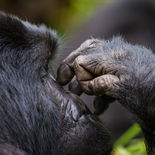
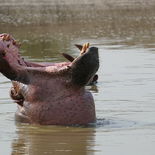
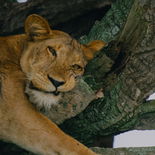

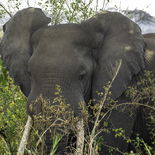
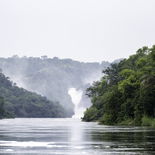

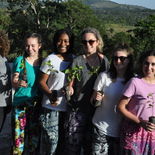
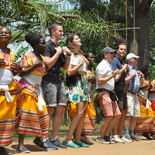
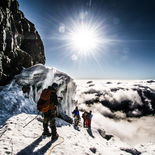
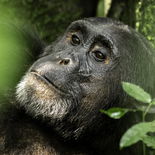
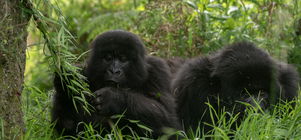
Share This Page